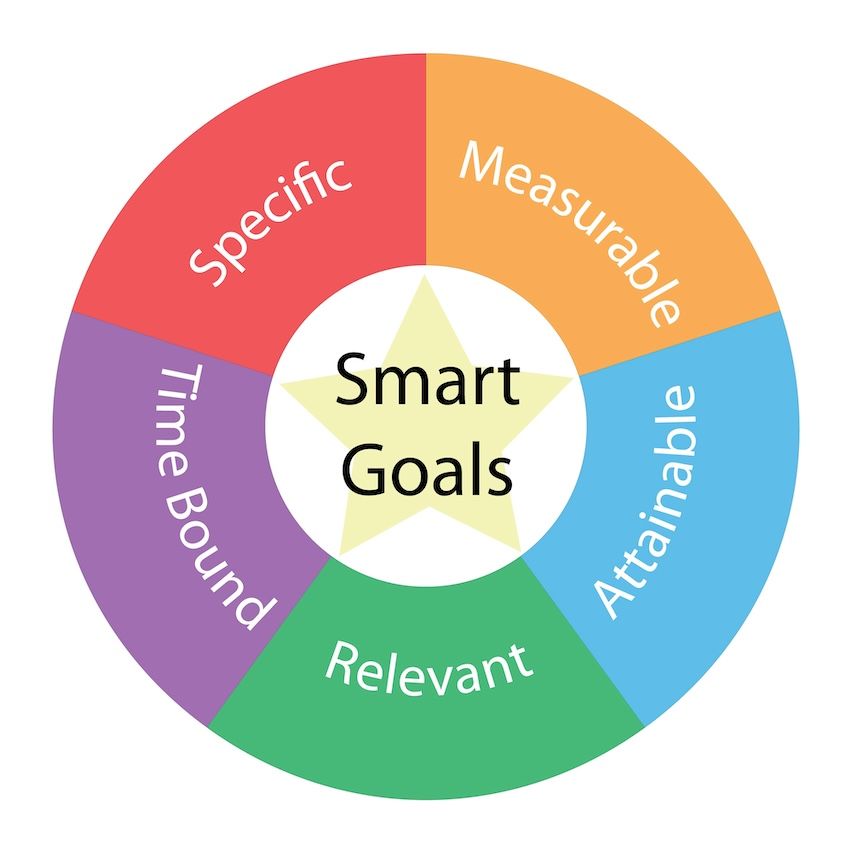Contents
the email tool that makes email marketing simple
How to Create an Email Marketing Strategy That's Effective
Published: December 23, 2024
Email marketing is a key part of any digital marketing plan because it allows you to connect with your customers directly via email. An effective email marketing strategy can help you make more people aware of your brand, boost your sales, and retain existing customers.
To do this well, you first need to understand how email marketing fits into your overall marketing strategy. Next, you need to understand who your audience is and come up with a plan for how you can reach them. This involves creating messages that catch their interest. Lastly, you must keep improving your approach based on the results. In this article, we aim to show you how to do all this and more.
What Is an Email Marketing Strategy?
An email marketing strategy is a plan businesses create to help them communicate with their audience through emails. It involves sending out emails to subscribers to achieve specific goals, such as increasing brand awareness, promoting products, or engaging customers. This strategy has various elements, including the emails' content, when and how often they are sent, and monitoring the recipients' responses.
By tailoring messages to meet their audiences' needs and interests, businesses can promote stronger relationships with their customers, thereby encouraging loyalty and driving sales.
Examining Your Existing Business and Marketing Strategies
Before you start working on your marketing strategy, take a look at your current business approach. If you know what your business is good at and where it struggles, you can use marketing to boost those strong points and fix the weaker spots.
Ultimately your marketing strategy is there to serve your business goals. This means that you first need to look at what you want for your business. Are you looking to retain old customers or find new ones? Do you want to increase your customer numbers or move into a more premium market sector?
The heart of a marketing strategy is understanding the needs, preferences, and behaviors of your target market. This means keeping an eye on market trends, what competitors are doing, and what customers are saying about your products or services.
Examining what's going on in the business might also reveal ways to link your marketing with other things you're doing, like creating a new product range or opening a new store. This can make all your marketing efforts more effective because they're linked to your business goals. It's all about making informed marketing decisions that drive your business forward.
Looking at Your Digital Marketing Strategy
Digital marketing is a large part of any modern marketing strategy because it lets you connect with customers online. It includes using social media, emails, your website, and online ads to reach people. It's flexible, effective, and affordable, working alongside traditional marketing to help you meet your business goals. For many small businesses and tech startups, digital marketing may be the only form of marketing that they need.
One of the best things about digital marketing is how targeted it can be. You can choose who sees your ads based on what they like, where they are, and more. This means you're not wasting time and money showing your message to people who aren't interested.
Another plus is that you can see how well your digital marketing is working. Unlike physical billboards or newspaper adverts, you can obtain real-time data on what's hitting the mark and what's missing. This enables you to make changes quickly to improve your results.
Creating an Email Marketing Strategy
Email marketing is one of the most important parts of a digital marketing strategy. One of the best things about it is that an email newsletter can be much more personal than other forms of digital marketing. You can send content that's truly relevant to your subscribers and address them by name while still reaching a wide audience.
By sending emails to your subscribers, you can communicate directly with people who've already shown interest in your brand. This direct line to your audience is one of the things that makes it so effective.
Another great part of email marketing is how inexpensive it can be. For instance, if you sign up for Maildroppa, it's completely free for the first 100 subscribers. This gives you what's essentially an indefinite trial period, allowing you to grow your business with very low marketing costs.
Just like some of the other forms of digital marketing, email marketing offers real-time analytics. By analyzing key analytics like your bounce rate, open rate, and click-through rate, you can discover exactly what is and isn't working. For example, if most of your subscribers aren't even opening your emails, you might need to work on improving your email subject lines or email copy or sending them different types of emails.
Setting Clear Email Marketing Goals
Having specific, measurable goals for your email marketing campaigns is a great way to start creating an effective email marketing strategy, providing both direction and a metric for success.
To establish marketing goals, begin by ensuring they align with your broader business objectives, such as increasing product sales, driving website traffic, or enhancing event attendance. Your email campaigns should bring you closer to these goals.
Adopting SMART criteria—Specific, Measurable, Achievable, Relevant, and Time-bound—can significantly improve your strategy's effectiveness. For instance, rather than setting an ambiguous goal to "increase sales," opt for a more tangible target like "boost online sales by 10% within the next quarter through targeted email promotions."
It's also vital that you use analytics to monitor your progress towards these goals. Should you find your efforts falling short of the set benchmarks, be prepared to recalibrate your approach. This might involve refining your list segmentation, experimenting with different email content, or modifying the frequency of your dispatches. A consistent review of your goals alongside the performance metrics of your email initiatives ensures that you'll always be improving.
Developing and Maintaining an Effective Email List
Developing and maintaining an effective email list is the foundation of any successful email marketing strategy. It doesn't matter how good your content is – if it isn't being sent to the right people, you won't see the results that you're after. Here's how you can ensure your list is in line with your wider campaign goals:
-
Avoid Buying Bulk Lists: Here's where many email marketers go wrong. Purchasing email lists can seem like a quick way to expand your audience, but it often backfires. These lists can contain outdated information, leading to high bounce rates and spam complaints. More importantly, recipients have not opted in to receive communications from you, which can harm your brand's reputation and engagement rates. There are better ways to grow your email lists!
-
Develop the List Organically: Here's one of the top email marketing best practices – it's better to grow your email list through your website, social media channels, and other spaces where you come into contact with your customers. Encourage email signup by offering value, like exclusive content, discounts, or early access to new products. Organic growth ensures your subscribers are genuinely interested in your brand and makes them more likely to open the emails that you send.
-
Segment Your Email List: This is probably one of the best email marketing strategies we can share. Tailoring your emails to your subscribers' interests and behaviors increases engagement and conversion rates. Use the data you collect at sign-up and through interactions to segment your list and only send subscribers the emails that they're most likely to be interested in. This segmentation makes your emails more relevant and valuable to your audience, improving your open rates, and making them less likely to unsubscribe.
-
Keep the List Clean: Regularly decluttering your email list helps maintain its health and effectiveness. It consists of removing inactive subscribers and correcting or deleting invalid email addresses. If some subscribers who were previously interested are no longer responsive, consider sending them a re-engagement email. These practices improve your deliverability rates and help to ensure that your emails don't land in the spam folder.
By focusing on these key points, you'll develop a strong foundation for your email marketing efforts, leading to better engagement and results.
Improving How You Send Emails
Before you send your emails to the people on your list, you need to make sure that they're going to be well-received. The following marketing tactics will help to ensure that all your time spent crafting useful content and engaging subject lines won't go to waste.
Design for mobile
Most people check their emails on their phones, so your emails need to look good on small screens. This means using an email design that adjusts to fit whatever device it's viewed on, whether it's a smartphone, tablet, or computer. Ensure your text is easy to read and your links or buttons are big enough to click on without having to zoom in.
Also, when you send an email, keep it short and sweet. People on their phones are often on the go, so they prefer emails that get to the point quickly. If your email is too long or not formatted properly for their phone, they probably won't read it.
Improve email deliverability
You want to ensure your emails get to your audience's inbox and don't get thrown into a spam folder. This can be achieved by sending emails through a reputable email service provider, keeping your email list clean, and avoiding words that trigger spam filters like "free" or "guarantee." Also, ask your subscribers to add you to their address books as this helps your emails go straight to their inboxes.
Automate your email campaigns
Email automation uses software to send emails automatically based on triggers or schedules you set. This is great because it saves you a lot of time and guarantees your emails reach people exactly when they should. For example, you can set up a welcome email that is sent whenever someone signs up for your list. Or, you can schedule a series of emails for a special promotion that is sent out at specific times. A confirmation email is useful too, for instance to confirm registrations or subscriptions.
Automation is like having a personal assistant that takes care of sending out emails for you, making sure the right message gets to the right person at the right time.
Develop a content calendar
A content calendar helps you plan when and what you're going to send in your emails. It's essentially a schedule that keeps you organized so you're not scrambling at the last minute to figure out what to send. You can decide ahead of time on themes for your emails, special promotions, or important dates that relate to your business.
A calendar also helps you to keep your email frequency just right. If you send emails too often, your subscribers are likely to start ignoring them. If you don't send them often enough, they might miss out on new products or great deals. You can incorporate this with email automation so that the emails you want are sent out automatically according to your content calendar.
Creating Successful Email Marketing Content
Now that you're all set up with an effective plan, a clean and segmented email list, and a good content calendar, it's time to work on the emails themselves. After all, the most important part of creating a successful email marketing campaign is to have content that's interesting and relevant.
Craft engaging subject lines
Your email's subject line is the first thing people see, so it's an extremely important part of your email marketing plan. It decides whether someone opens your email or ignores it. Think of the subject line as the headline of a newspaper article. If it's interesting, people will want to read more. Spend time coming up with subject lines that catch people's attention. Use clear, exciting language that tells the reader what's inside the email, but keeps them curious enough to open it. For example, instead of "Sale on Now," try "Unlock Your Exclusive Discount Inside!" This makes your one email stand out from the hundreds of others in their inbox. Do this for the entire email series, and you've got a winner.
Create valuable content
Your email content is the main part of the email, and it's probably where most of your time should go. It's what keeps people interested and wanting to read your emails and stay subscribed. Aim to provide value with every email you send, whether it's helpful tips, exclusive deals, or interesting updates about your products or services. The key is to know what your audience finds valuable. This could mean sharing how-to guides, stories about how your product helped someone, or industry news. Keep your emails clear and to the point, and use a friendly, conversational tone. Pictures and videos can also make your emails more engaging, but make sure they're relevant to your message. Remember, every email is a chance to build a stronger relationship with your audience.
Make your emails more interactive
An interactive version of your email could include things like surveys, polls, or videos. They make your emails more fun and engaging, helping to keep subscribers' attention for longer. They also encourage people to interact more with your content. For instance, a fashion retailer might include a poll asking subscribers to vote on their favorite summer outfit. This gets customers involved plus gives the retailer insights into their preferences. It also elevates what you send out from being an average email to a pleasurable experience.
Personalize your marketing emails
Personalization means making each email feel as if it's been written specifically for the recipient. This goes beyond just using their name in the greeting; it's about making the content of the email related to their interests and needs. Personalization is probably the best email marketing tip we can give you. You can use what you know about your email clients, like their past purchases or how they've interacted with your emails before, to make your messages more targeted.
For example, if someone recently bought a camera from your store, you could send them a follow-up email containing tips on how to take great pictures.
Personalized emails show your subscribers that you understand and care about them, which can lead to more trust and loyalty. Plus, people are more likely to open and act on emails that feel personal and relevant to them.
Create email templates
Having preset email marketing templates helps you send emails quicker and standardizes their appearance, which is good for your brand. You can still customize templates for different types of messages, such as newsletters, promotions, or welcome emails, ensuring that each email type is unique. However, it will still align with your overall branding. This saves time because you don't have to start from scratch for each email. Plus, templates ensure your emails look good on both phones and computers. This way, you can spend more time on your email's message and personalization and less on design.
Test and optimize
Making your emails better is a lot like experimenting in science class. Crafting a strong email marketing strategy means you need to try different things to see what works best. This could mean changing the email's wording, appearance, or call-to-action.
For example, you might send two versions of the same email, each with a different subject line to your list of email addresses, to see if that affects the email open rate. Alternatively, you could change the color of your "Buy Now" button to see if more people click on it. You might even want to change specific elements based on your subscriber segmentation. The key is to change one thing at a time so you know exactly what made the difference. By performing these tests, you'll learn more about your audience's preferences which will help you create even better emails.
Compliance and Best Practices
Following email rules is an important part of any email strategy. Laws like GDPR in Europe and CAN-SPAM in the USA tell you what you can and can't do with email marketing. In a nutshell, you must ensure people have agreed to receive emails from you, and you must allow them to easily unsubscribe if they want to. Sticking to these rules keeps you out of trouble and builds trust with your customers.
Ensuring the security of your subscribers' data is paramount in building and maintaining trust. Implementing robust data protection measures safeguards against unauthorized access and data breaches, which can significantly harm your reputation and subscriber trust. Regularly update your security protocols, employ encryption for subscriber information, and conduct periodic security audits.
By demonstrating a commitment to data security, you comply with privacy laws and reassure your subscribers that their information is treated with the utmost care and respect. This commitment to security is a crucial aspect of fostering a positive and trusting relationship with your audience, making them more likely to engage with your emails and support your brand.
Advanced Email Marketing Strategies
Integrating with other marketing channels
Using email marketing tactics alongside your other marketing efforts can boost your overall strategy. It's effective on its own but there's no reason to not use other content marketing strategies as well. For example, you can use social media to attract new subscribers to your email list or include links to your latest blog posts in your emails to drive traffic to your website. You can even use emails to remind people about an event you're promoting on Facebook.
The key is that all your marketing channels should work together. This way, your message will get across more clearly and effectively, and your audience will see a consistent brand no matter where they interact with you.
Using CRM as an email marketing tool
Using a customer relationship management (CRM) system with your email marketing platform helps you keep track of every interaction with your customers. This way, you can send emails that are even more personalized. For example, if you know a customer just made their first purchase, you can send them a first email thanking them and suggesting other products they might like. You can also use the information from a CRM system to better segment your email subscribers based on their previous interactions. Integrating email with CRM makes your marketing smarter, helping you build stronger relationships with your customers.
Using Analytics for an Effective Email Marketing Campaign
Understanding the effectiveness of your email campaigns is important, and email analytics provide the insights needed to enhance your strategy. Key metrics like open rates, click-through rates (CTR), unsubscribe rates, bounce rates, and conversion rates give you a good idea of whether or not your campaign is performing according to your goals.
Key Metrics Explained:
-
Open Rate indicates the percentage of recipients who have opened your email. This metric helps show the initial appeal of your email and indicates how effective your subject line and sender name are.
-
Bounce Rate differentiates between soft bounces (temporary issues like a full mailbox) and hard bounces (permanent errors, such as a non-existent email address). A high bounce rate usually indicates problems with your email list's quality or outdated contacts.
-
Click-Through Rate (CTR) measures the percentage of email recipients who clicked on one or more links within an email. A high CTR suggests that the content was engaging and successfully prompted action.
-
Unsubscribe Rate reveals the percentage of recipients who opted out of your mailing list after receiving an email. Monitoring this rate helps how relevant your content is and how happy your subscribers are overall.
-
Conversion Rate tracks the percentage of recipients who completed a desired action, like making a purchase or signing up for a webinar, after clicking a link in your email. This metric is crucial for understanding the ROI of your email marketing efforts. It's great to have good content but if you're running a business, your email marketing budget needs to be getting you a return.
-
Growth Rate of your email list gives insight into how effectively you're attracting new email subscribers and retaining existing ones.
Conclusion
We've shared some valuable email marketing tips here to help you engage your audience and hit your marketing goals effectively. Having an effective email strategy is important both for reaching your business goals and monitoring your progress towards those goals.
Following these tips is important but remember that success doesn't just come from knowledge, it also comes from using the right tools. From our experience in email marketing, we believe that Maildroppa is the most effective email marketing service available today.
Maildroppa maximizes the effort you put into email marketing. It's free for the first 100 subscribers for as long as you need, and you can quickly see how it helps with everything from building your email list to reports that help you track your subscriber analytics.
Maildroppa is the best solution for taking your email campaign from a pipe dream to a winning email marketing strategy.



